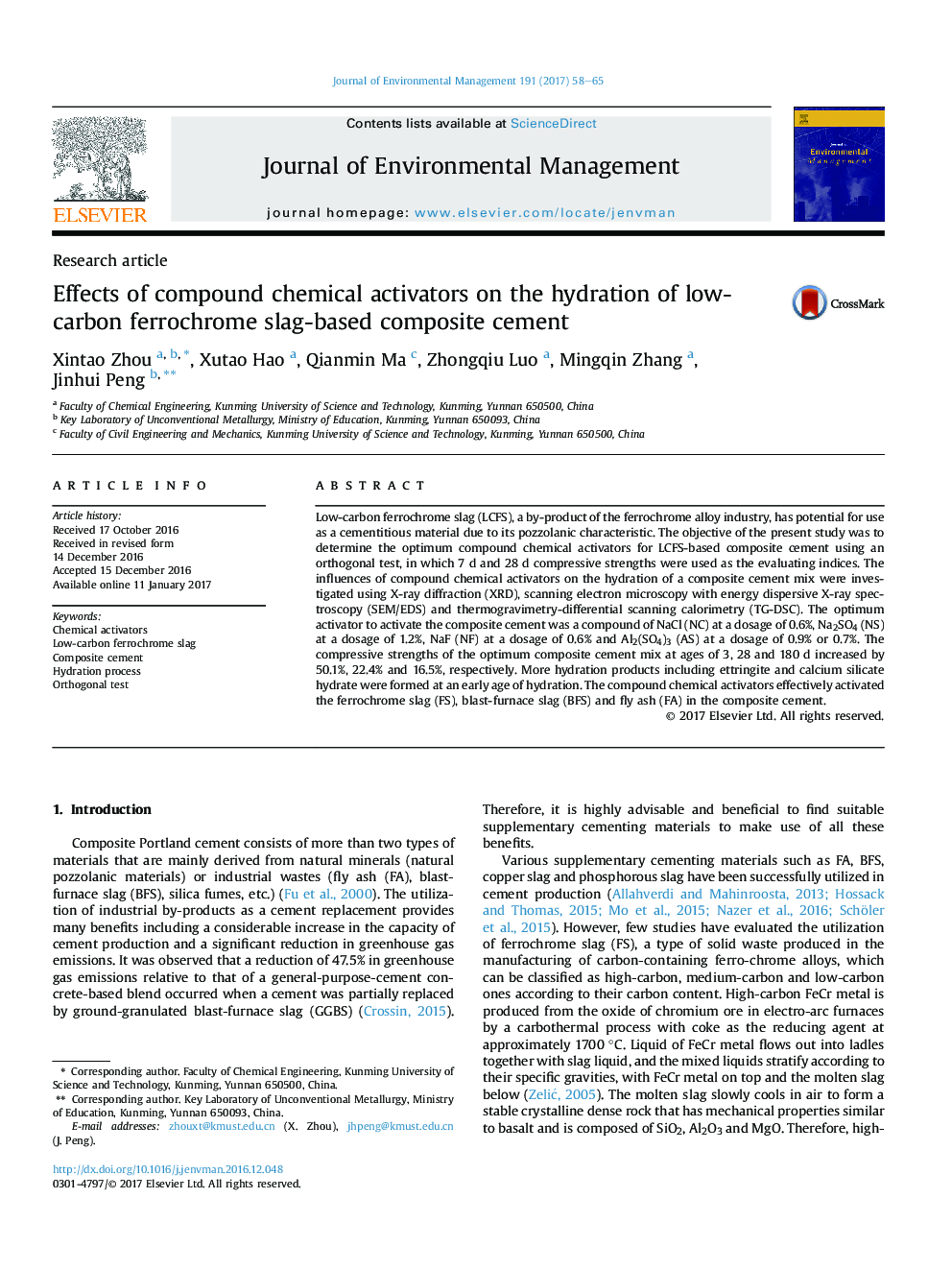| Article ID | Journal | Published Year | Pages | File Type |
|---|---|---|---|---|
| 5116772 | Journal of Environmental Management | 2017 | 8 Pages |
â¢Low-carbon ferrochrome slag can be utilized as supplementary cementing material.â¢Effects of chemical activators on the hydration of LCFS-based composite cement were studied.â¢The optimum compound chemical activators were determined using an orthogonal test.â¢The compressive strengths of cement at 3 and 28 d were increased by 50.1% and 22.4%.
Low-carbon ferrochrome slag (LCFS), a by-product of the ferrochrome alloy industry, has potential for use as a cementitious material due to its pozzolanic characteristic. The objective of the present study was to determine the optimum compound chemical activators for LCFS-based composite cement using an orthogonal test, in which 7Â d and 28Â d compressive strengths were used as the evaluating indices. The influences of compound chemical activators on the hydration of a composite cement mix were investigated using X-ray diffraction (XRD), scanning electron microscopy with energy dispersive X-ray spectroscopy (SEM/EDS) and thermogravimetry-differential scanning calorimetry (TG-DSC). The optimum activator to activate the composite cement was a compound of NaCl (NC) at a dosage of 0.6%, Na2SO4 (NS) at a dosage of 1.2%, NaF (NF) at a dosage of 0.6% and Al2(SO4)3 (AS) at a dosage of 0.9% or 0.7%. The compressive strengths of the optimum composite cement mix at ages of 3, 28 and 180Â d increased by 50.1%, 22.4% and 16.5%, respectively. More hydration products including ettringite and calcium silicate hydrate were formed at an early age of hydration. The compound chemical activators effectively activated the ferrochrome slag (FS), blast-furnace slag (BFS) and fly ash (FA) in the composite cement.
